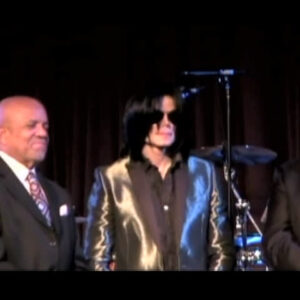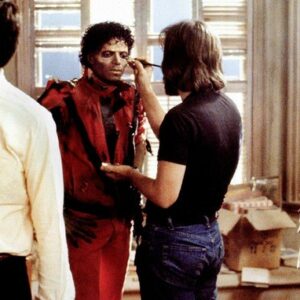Few artists have wielded the kind of influence over the world of music like Aretha Franklin. Known as the “Queen of Soul,” Franklin’s career spanned six decades, during which she transformed the very fabric of soul, R&B, and popular music. But beyond her powerful voice and towering stage presence, there was another side to Aretha—a masterful collaborator and studio innovator, constantly shaping and refining her sound with an eye toward perfection.
In this piece, we’ll delve into the creative process that defined Aretha Franklin’s iconic work, exploring how her early influences, collaborations with producers and engineers, and her leadership in the studio helped shape a sound that would become timeless.
Early Years and Influence
Aretha Franklin’s journey into music began with a firm foundation in gospel, growing up in Detroit as the daughter of prominent minister Rev. C.L. Franklin. Her father, known as the “Million Dollar Voice,” exposed her to gospel greats and supported her early talents, offering her the rare opportunity to rub shoulders with musical legends from a young age. Under the roof of the New Bethel Baptist Church, Franklin was already absorbing the emotional intensity and spiritual depth that would later define her music.
Yet, it wasn’t just gospel that informed her sound. Aretha’s childhood home was a gathering place for musical giants, such as Sam Cooke and Mahalia Jackson, whose influence stretched beyond the church. Cooke’s ability to merge gospel with secular music laid the groundwork for Aretha’s future in R&B, while Jackson’s unrestrained emotion became a touchstone for Franklin’s own performances.
In addition to these musical titans, jazz played a key role in Franklin’s early development. As a teenager, Aretha was captivated by the improvisational nature of jazz, frequently attending performances and soaking in the fluidity and freedom of the genre. Her ability to weave jazz phrasing into her vocal work became one of the defining elements of her style, allowing her to convey emotion with unparalleled nuance.
By the time Aretha moved to New York City in 1960 to pursue a career in music, she had already mastered the elements of gospel, jazz, and soul, but it was in the studio where she would refine these influences into something uniquely her own.
Studio Magic: Crafting Her Iconic Sound
Aretha Franklin’s reign in the recording studio began in earnest when she signed with Atlantic Records in 1966. Partnering with producer Jerry Wexler, Aretha found the perfect environment to unleash her creative instincts. Together, they embarked on a series of recording sessions that would produce some of her most memorable tracks, including “Respect,” “Chain of Fools,” and “I Never Loved a Man (The Way I Love You).”
Franklin’s collaboration with Wexler was nothing short of magical. He had an intuitive understanding of Aretha’s vocal strengths and gave her the creative freedom to explore and experiment. But more importantly, Wexler respected Aretha’s vision and didn’t impose a predetermined direction on her sound. He encouraged her to take charge, resulting in an organic and authentic style that became her hallmark.
Aretha’s willingness to push boundaries extended beyond her collaboration with Wexler. In the studio, she worked closely with engineers to capture the raw emotion of her voice, often experimenting with microphone techniques and arrangements to achieve the perfect sound. She favored live recordings, where the spontaneity of the performance could be felt and the passion came through in each take.
One notable example of Aretha’s creative process involved the use of multi-tracking—a then-innovative technique that allowed her to layer her vocals and experiment with harmony and texture. On songs like “I Say a Little Prayer,” her ability to play with the harmonies in real time added depth to the recording, giving the impression of a full choir when, in reality, it was all Franklin’s voice.
Aretha’s studio work was never just about hitting the right notes; it was about capturing the emotion of the moment. She insisted that each performance, each take, be infused with feeling. “Respect,” for example, wasn’t just a song—it was a statement, an anthem, and Franklin ensured that her delivery conveyed all the fire and urgency of its message. Her recording techniques often mirrored this passion, with live instruments accompanying her in the studio, helping her channel energy directly into the music.
Iconic Albums and Behind-the-Scenes Stories
Few albums in music history can boast the level of influence that Aretha Franklin’s “I Never Loved a Man the Way I Love You” did. Released in 1967, the album is a masterclass in emotion, and much of its success is owed to the symbiotic relationship between Franklin, her producers, and the engineers who helped craft its sound. The sessions for “I Never Loved a Man” at FAME Studios in Muscle Shoals, Alabama, are legendary, particularly for the moment when Aretha transformed Otis Redding’s “Respect” into her own feminist and civil rights anthem.
Wexler recalled how Aretha took control in the studio. It wasn’t just her vocals that she was concerned with; Franklin would often suggest changes to arrangements, insisting on slowing down tempos, switching up rhythms, or even asking musicians to play with a different feel. Her intuition for how a song should unfold was unmatched, and her ability to elevate a song from great to iconic was a result of this meticulous attention to detail.
Her approach was particularly notable on “I Say a Little Prayer,” a song written by Burt Bacharach and Hal David. The original arrangement was softer, but Franklin reworked it into a bolder, more vibrant version, transforming the song into a signature hit. In the studio, Aretha would often sit at the piano, working through chords and progressions with her musicians, laying down ideas that eventually formed the backbone of her arrangements.
Engineers and producers who worked with Aretha spoke often of her professionalism and her unique ability to inspire everyone in the room. “She wasn’t a diva in the negative sense of the word,” recalls Arif Mardin, who worked closely with Franklin during the recording of “Young, Gifted, and Black.” “She was meticulous, always pushing us to achieve more, not just for her, but for the music.”
Aretha’s Leadership in the Studio
While Franklin was known for her vocal prowess, her role as a leader in the studio cannot be overstated. Aretha took the reins of her projects with an ironclad vision. She had a deep understanding of rhythm, melody, and the interplay between her voice and the instruments around her. Often playing the piano herself during recordings, she meticulously crafted arrangements that would highlight the raw emotion in her vocals.
Perhaps the most remarkable aspect of Aretha’s leadership was the way she empowered those around her. She had a knack for getting the best out of her team, whether they were session musicians or engineers. She was demanding but kind, and her belief in the power of music inspired everyone in the room to give their best performance.
Aretha’s ability to assert control over her projects extended beyond arrangement and melody. In many cases, she would decide how certain elements of a song should be mixed, ensuring that her vocals were perfectly balanced against the instrumentals, never overshadowing but always central. Franklin understood the importance of harmony, not just in music, but in the working relationships she fostered in the studio. This collaborative spirit allowed her to achieve musical greatness while maintaining an environment of mutual respect and admiration.
Legacy and Impact on Future Generations
The influence of Aretha Franklin’s innovative studio work can still be felt in today’s music landscape. Artists such as Beyoncé, Alicia Keys, and Adele have all cited Franklin as a major influence, not just in terms of her vocal style, but also in the way she approached recording as an art form. Her fearless experimentation with new techniques, her insistence on capturing raw emotion, and her leadership in the studio have become a blueprint for generations of musicians.
Beyond individual artists, Aretha’s impact on the broader music industry is undeniable. She challenged the conventional norms of recording and pushed for a level of authenticity that was rare at the time. Her ability to blend genres, from gospel to jazz to R&B, expanded the possibilities of what popular music could achieve, influencing producers and musicians to think beyond traditional boundaries.
Conclusion
Aretha Franklin was more than a singer; she was a creative force whose genius transformed the recording studio into a sacred space for artistic expression. Her contributions to soul, R&B, and music as a whole go far beyond her unforgettable performances—they include her ability to collaborate, innovate, and lead with a vision that has left an indelible mark on music history. Today, as we listen to her timeless recordings, we hear not just the power of her voice, but the artistry that went into every moment she spent in the studio, shaping masterpieces that will continue to inspire for generations to come.





